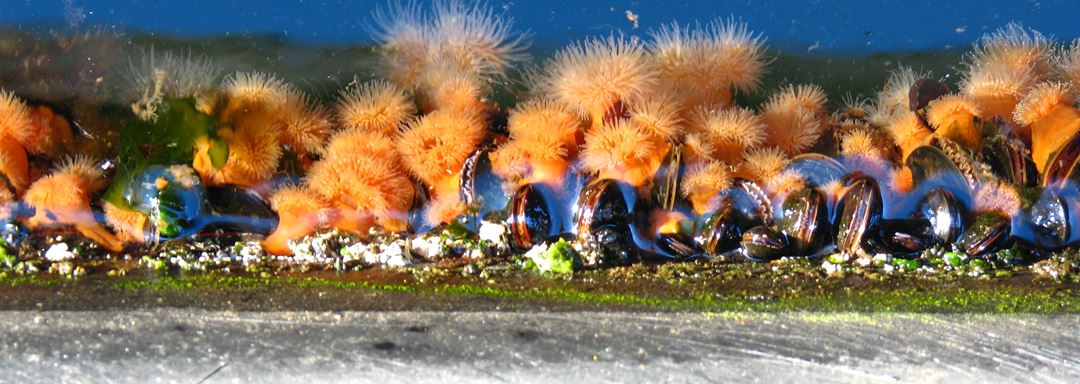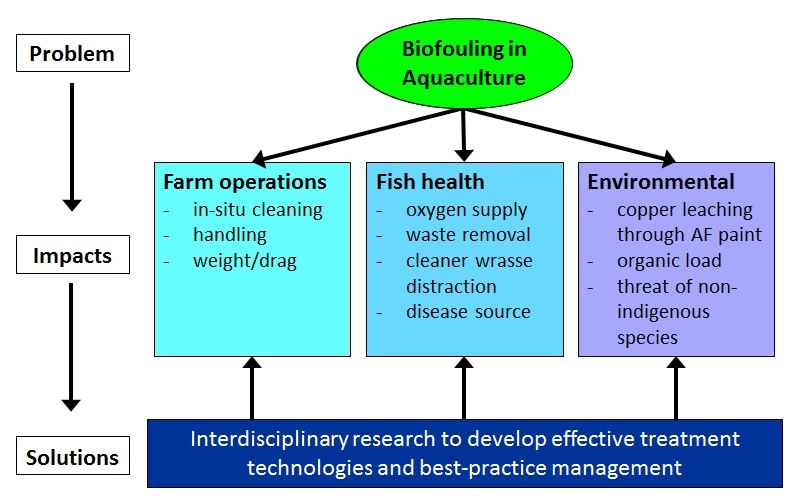About biofouling
Contact person

Marine biofouling is the accumulation of benthic organisms on artificial surfaces submerged in the sea. The biofouling process generally begins with the adsorption of organic molecules to a surface and the subsequent attachment of microorganisms (bacteria, algae, etc.) that form a microbial film (biofilm). Once a biofilm is established, more complex assemblages of macro-organisms start to develop that may include algae, sessile marine invertebrates (barnacles, hydroids, mussels, ascidians, sponges, bryozoans, etc.) and associated mobile organisms (crabs, shrimps, snails, worms, etc.). The composition of biofouling assemblages and the speed with which they develop are influenced by many variables, including temperature, salinity, depth, current regime and the proximity and species composition of surrounding hard-substrate habitats.
Biofouling affects most maritime industries and is generally associated with significant operational challenges and costs. In marine finfish aquaculture, for example, biofouling can clog cage nets and compromise fish welfare and cage stability. Unwanted biofouling on bivalve cultures can lower product value. The accumulation of biofouling on vessel hulls increases drag and fuel usage. Fouling of oil and gas industry infrastructure or coastal power plants can compromise sensitive equipment or cooling systems. Biofouling on ocean-going vessels is also one of the most important mechanisms for the introduction and spread of non-indigenous marine species.
SINTEF Fisheries and Aquaculture conducts basic and applied research into marine biofouling, its prevention and management. Our predominant focus is Norway's aquaculture industry and our main goal is to assist the industry in minimizing the unwanted impacts of biofouling through optimized control technologies and environmentally sustainable best-practice management. We also have capability, experience and ongoing engagements with the shipping and oil and gas industries and environmental management agencies.
Biofouling on salmon farms
The development of biofouling on salmon farm installations has a range of impacts relating to: (1) farm operations, (2) fish health, and (3) the surrounding environment (see figure below). Norway's salmon farmers spend considerable amounts of money to control biofouling but current technologies and approaches are not fully effective and can, in some instances, have undesirable side-effects. A key objective of SINTEF's biofouling research group is to work with the industry and use carefully designed, interdisciplinary R&D to increase the effectiveness of biofouling management while minimising associated impacts.
Please contact us for more information relating to specific activities in this areas.

|
| Impacts of biofouling in Norwegian salmon aquaculture |
